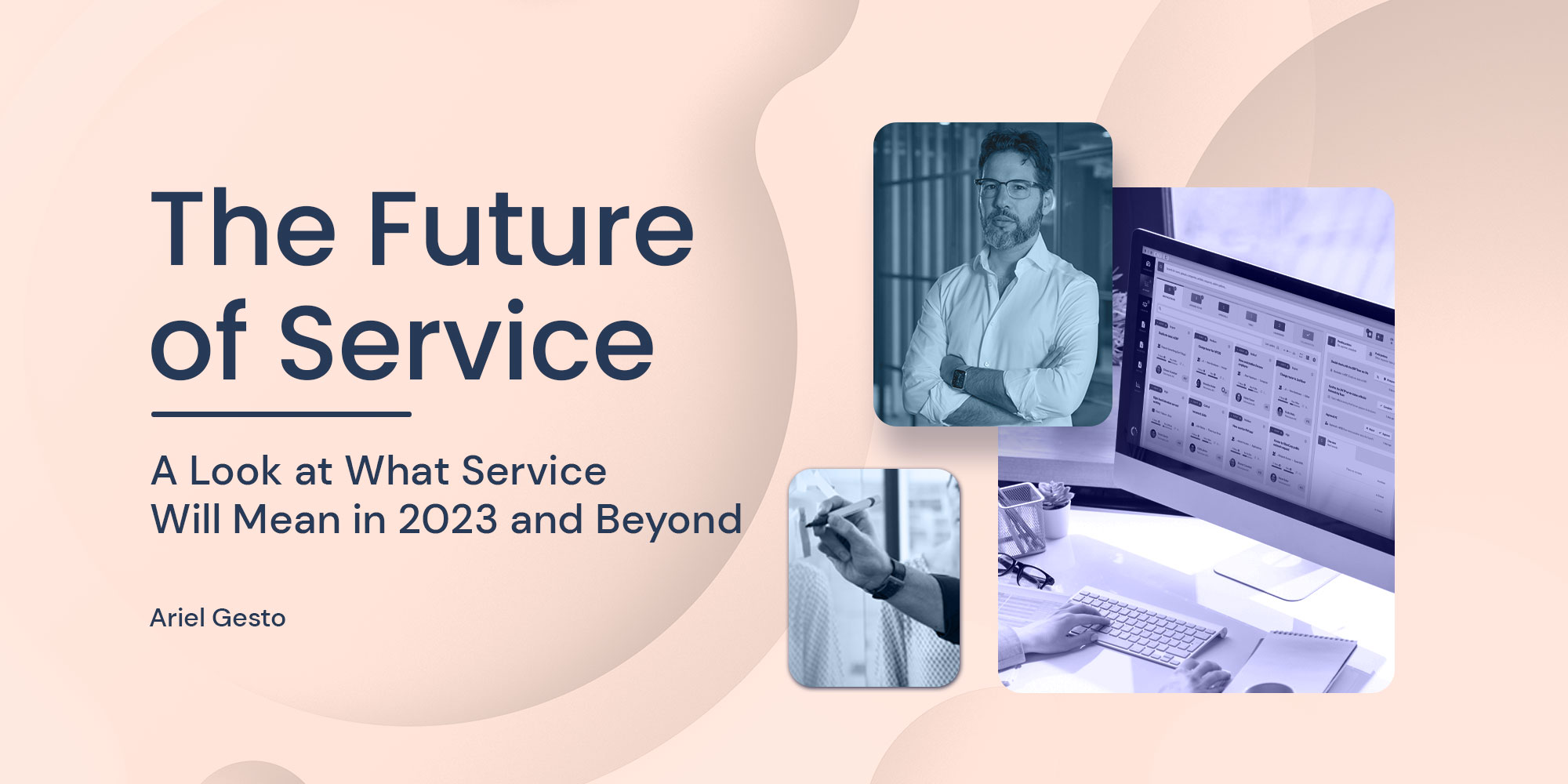Look through think pieces and conversations over the course of the last two years and you’ll find a lot of talk about the acceleration of digital transformation. Now that the dust has settled, we can safely say that many of the grand predictions about the future of work have taken place. And though some of the more radical predictions didn’t quite come to pass (for instance, the creation of new revenue streams via enabling technology), the hyper-digitalization of the workplace did accelerate at a remarkable speed.
And though this digital transformation has progressed rapidly and continues to advance with time, we are now armed with the tools, information, and perspective to visualize a proper glimpse of the future of service – and the many changes implied within.
A continued shift toward Enterprise Service Management
Necessity is the mother of invention, and the sudden onset of unpredictable variables certainly shifted the direction of Service Management. Whether these shifting circumstances effectively altered the course of enterprise-wide digital transformation or simply accelerated the path we were already on is a debate for another day.
Whatever the case, the shift towards applying the guiding principles of service management to other areas of the company beyond IT – what we know as Enterprise Service Management – is a continuing trend that will dramatically affect what the future of service looks like. The splintering of the workforce to various geographical locations and the decentralization of teams pushed the different departments towards finding a degree of visibility for their workload. These are the same drivers that led IT departments to formalize their own workloads, leading to the adoption of ITSM tools.
|
|
Ultimately it comes down to the need for effective management. It would be impossible for teams to effectively manage their workloads or to maintain a full view of the status of their processes, without a centralized platform. Especially as teams continue to fragment across geographies, there’s a desire to obtain a thorough and comprehensive panorama of the work they have incoming, involved stakeholders, deliverables in waiting, and pending tasks.
Enterprise Service Management represents a massive leap forward in interdepartmental coordination. When a service involves more than one department – for instance, the process of onboarding a new employee – every associated process can be triggered using workflow automation in the unified service platform. This achieves a swifter and more streamlined process and guarantees increased buy-in from users at every step of the workflow.
Low-Code/No-Code technology, and governance
Low-Code and No-Code technology is seen as a key part of digital transformation. In fact, Gartner predicts that 65% of app activity will result from no-code development by 2024. This is due to a number of factors, many of which were exacerbated by the global pandemic. And though they are intrinsically tied to the future of service, the rise of low and no-code technology can be seen as part of the broader trend towards the democratization of technology.
These solutions, and the fostering of the “citizen developer,” can represent a strategic advantage for businesses. They allow for innovation without the involvement of a multi-tiered development cycle and provide department leaders with more control over their tasks. Overall, the use of these technologies tends to speed up innovation as well as the overall length of processes. However, the use of these platforms isn’t without its complications, many of which can have a long-lasting impact on the overall quality of service.
One of the biggest problems with implementing no or low-code solutions is the issue of governance. Without oversight or protocols around access, Low-Code/No-Code solutions are prone to security issues and questions around governance. Where the controls are, who is overseeing what the applications are doing, and what information the different departments are using to make the necessary decisions.
Having a set of guardrails to maximize the value of the platform and ensuring that it is being used securely is hugely important when enabling citizen developers from across the organization to create apps. Otherwise, organizations run the risk of bumping into problems with Shadow IT, a lack of clarity, and potential security breaches. There’s a risk of a disconnect between enabling users to become citizen developers and the internal (and external) regulations companies are beholden to.
Additionally, there is extensive training required to use and implement Low-Code/No-Code solutions, the rigidness and restrictiveness of the solutions, and the difficulties around adoption. If they are indeed the future, measures must be taken to circumvent these obstacles. This is why  provides automatization options as well as structured, built-in, established governance. Additionally, single access points such as the customizable self-service portal ensure easy access and long-term adoption.
provides automatization options as well as structured, built-in, established governance. Additionally, single access points such as the customizable self-service portal ensure easy access and long-term adoption.
The onset of hyper-automation (and what it means for customer experience)
One of the main questions service management professionals have been grappling with for the last couple of years is “what can be automated?” And this gives way to another, deeper question – “what should be automated?”
The fact of the matter is that every task that is repetitive can (and probably will) be automated, whether it be through workflows or other technology. An industry trend that is quite clearly on the rise is hyper-automation.
Hyper-automation is the cross between robotic process automation and intelligent process automation. Essentially, it means applying machine learning, artificial intelligence, and natural processing language to previously existing automation initiatives geared toward minimizing mundane and repetitive tasks. This comes with a series of benefits – higher productivity, elimination of human error, and cutting out of redundancies. But it also comes at a cost, and sometimes has a negative effect on the user experience.
|
|
While there are many forward-thinking solutions that seek to cut costs and provide quicker, easier service for end users, we need to put the user experience first. A chatbot may seem like a great solution to many issues. But if this chatbot provides a bad user experience (which, at this point, is often the case), then it’s of no real use. Hyperautomation for its own sake should not be the goal in service management. Everything should be oriented toward that positive end-user experience.
So how can hyper-automation be used to bolster processes in a way that doesn’t sacrifice the user experience?
Empowered users, augmented agents
There is no putting the genie back in the bottle. Automation bolstered by AI will be a part of whatever the future of service looks like. But the fact of the matter is that now, more than ever, users put a lot of stock in experience. It is, as we know from user experience research, a growing concern that will have a dramatic impact on user engagement and buy-in. Sacrificing the user experience for cost-cutting measures is shortsighted.
The best way forward is to apply the advantages provided by tools such as machine learning towards the betterment of the agents and their preparation. To create augmented agents, giving the user access to the tools they need to succeed; providing them with the context they need so that they can be more effective, and more proactive in their day-to-day. Whether that means the use of machine learning capabilities (such as Support Assist on  ), predictive or automated dialing, or matching them with relevant knowledge base articles; it’s important to provide the necessary awareness and context about the state of service.
), predictive or automated dialing, or matching them with relevant knowledge base articles; it’s important to provide the necessary awareness and context about the state of service.
Through agent augmentation, companies are able to create a situation where their support employees have quick and easy access to tools and information they need, and customers are provided quicker and clearer solutions to their problems.
This isn’t some far-flung fantasy. Fostering these augmented agents is fully within the reach of service management, and will be a key point of focus for the following years. Finding the best way to do so, and being smart about how and when automation is deployed, will be key in figuring out what the future of service looks like.

